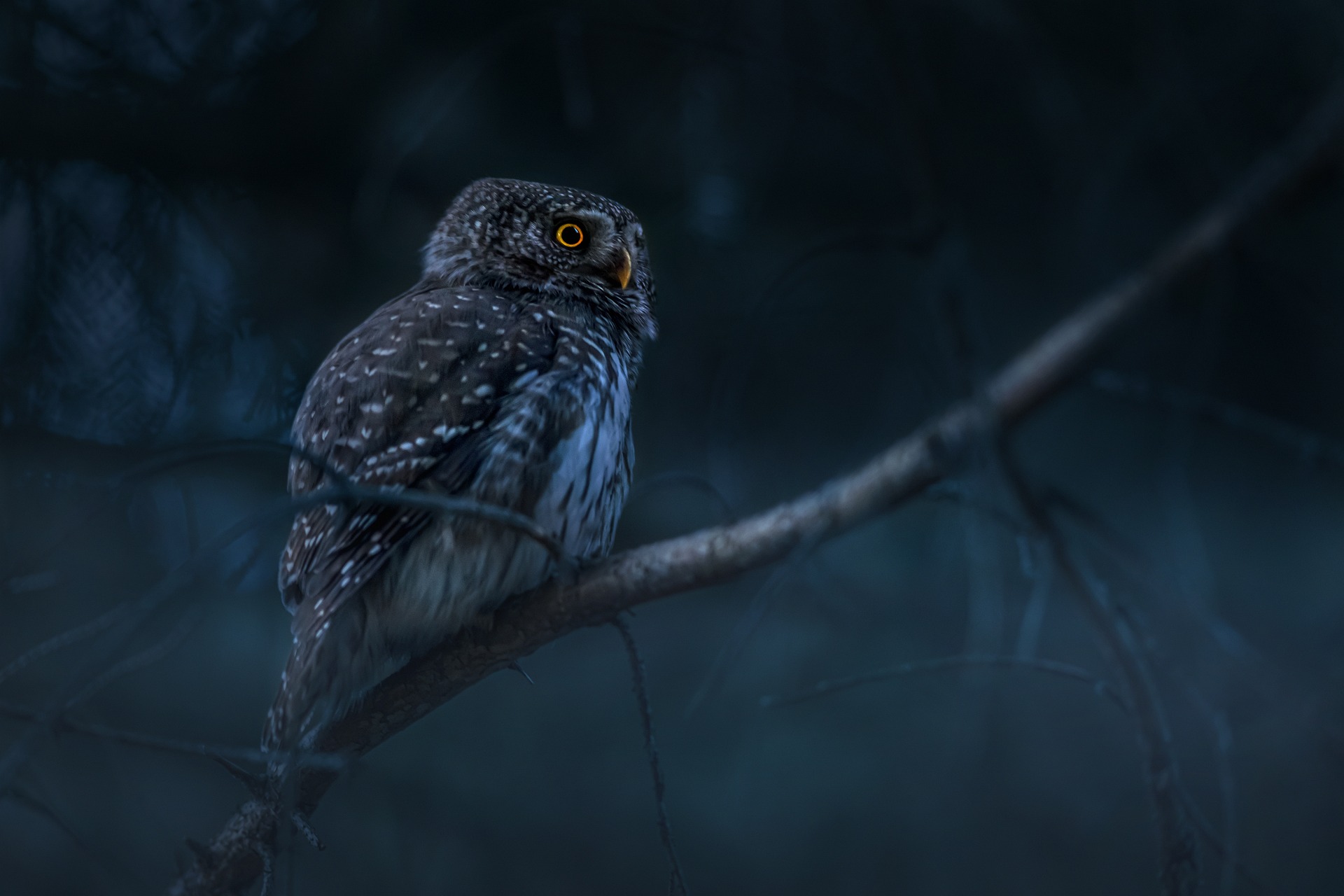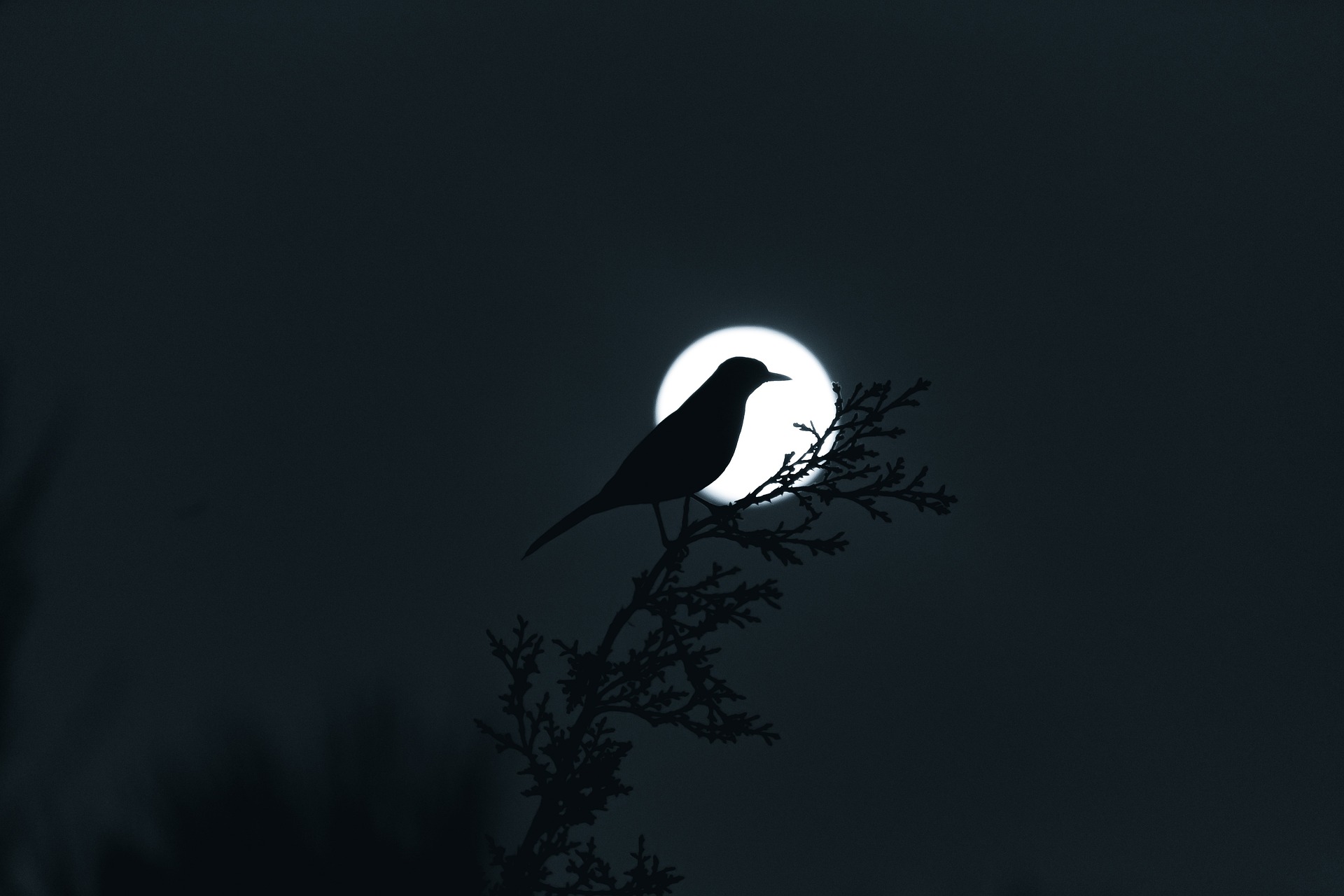Bright Side of the Night – 2.1.2
Activity Patterns
Nocturnal Wildlife
About two-thirds of the world’s animal species are nocturnal, including about half of all insects. This means that they are active during the night. Nocturnal animals depend on darkness and natural light from the moon and stars for orientation, movement, breeding, hunting or foraging, and avoiding predators and food competitors. What they all have in common are special gifts of sensory perception and adaptation strategies to life at night.
High Life in Dark Hours
When night falls, life awakens. Under the cover of darkness, animals like hedgehogs feel safe from predators. Others such as eagles or owls follow their prey. In summer nights, bats find sufficient food — available in the form of nocturnal insects. Moths pollinate evening primroses, which open their flowers only at dusk. Amphibians are active at night to protect themselves from dehydration, as they do not tolerate solar radiation and high temperatures well. Roe deer and red deer are generalists: they are often seen around dusk. Trout, for example, are also particularly active during twilight — they are sight hunters that can still profit from nocturnal insects at dusk. Small mammals such as field mice are often not clearly classifiable as day or night animals, as they have to eat in both halves of the day due to their high energy consumption. Other animals again have become nocturnal to avoid the human buzz, such as the European brown bear, wild boars, and foxes.
A Specialised Field of Research for Biologists
A special strand emerged in the natural science to focus specifically on darkness. This field of research is called scotobiology. The study of biology as directly and specifically affected by darkness. Some of this work has been going on for over a century, and lays the foundation for understanding the importance of dark night skies, not only for humans but for all biological species. A key observation is that most life has evolved to accommodate starlight and, plus, bright moonlight for about a week every month. Living species need the remaining three weeks of only starlight to recover from the bright moon. Any additional light is seen as a stressor that interferes with the rhythms and behaviors of humans and animals. This means that the lit environment is not one for which species have evolved. While behavior can change within some decades, biochemistry cannot. Rather, it evolves over ten thousands of years.[1]
Light and noise-multisensory pollution researchers at the University of Groningen found that “multisensory pollution” — the combination of light and noise at night — has special effects on species across the board and may therefore pose a considerable threat to wildlife. While reactions vary widely, they are significant.[2]
[1] CSbG Inc 2022
[2] Dominoni et al. 2019

Further Resources
Links below will redirect you to external websites. In accordance with the European data protection declarations, we would like to point out that by clicking on these links you may send data to external providers. We cannot prevent that.
Images
![]() There is a selection of photos of nocturnal animals available at pixabay.
There is a selection of photos of nocturnal animals available at pixabay.
Videos
![]() Why you should care about light pollution: impacts on nature, humans and animals
Why you should care about light pollution: impacts on nature, humans and animals
![]() The strange scourge of light pollution: How light pollution disrupts wild life and ecosystems.
The strange scourge of light pollution: How light pollution disrupts wild life and ecosystems.
![]() Light pollution and the effect on the ocean life
Light pollution and the effect on the ocean life
Online Resources
![]()
 The influence of light pollution on plants, animals and ecosystems (Helle Not)
The influence of light pollution on plants, animals and ecosystems (Helle Not)
![]()
 What happens at night just beyond our doorstep? Bothersome-Brightness-Cartoons. (Helle Not)
What happens at night just beyond our doorstep? Bothersome-Brightness-Cartoons. (Helle Not)
![]()
 Verlust der Nacht / Loss of the Night: Interdisciplinary Research network
Verlust der Nacht / Loss of the Night: Interdisciplinary Research network
![]() Into the Night in the Kaunertal Valley (Online publication)
Into the Night in the Kaunertal Valley (Online publication)
 Unterwegs in die Nacht im Kaunertal (Online publication)
Unterwegs in die Nacht im Kaunertal (Online publication)
 Konzept zur nachtbezogenen Naturpädagogik (Online publication)
Konzept zur nachtbezogenen Naturpädagogik (Online publication)
![]() Wikipedia page on Scotobiology (Wikipedia)
Wikipedia page on Scotobiology (Wikipedia)
![]() Page on Scotobiology by the Canadian Lighting Company (CSbG Inc 2022)
Page on Scotobiology by the Canadian Lighting Company (CSbG Inc 2022)
 Scotofilia (Treccani)
Scotofilia (Treccani)
 Animali notturni (Kodami)
Animali notturni (Kodami)
 Animali che vivono di notte: ecco i 10 più attivi al buio (Vita In Agriturismo)
Animali che vivono di notte: ecco i 10 più attivi al buio (Vita In Agriturismo)
Further Readings
![]()
 Regularly updated Literature and links with regards to light pollution and dark skies (Helle Not)
Regularly updated Literature and links with regards to light pollution and dark skies (Helle Not)
![]()
 Literature & Links on the website “Verlust der Nacht/Loss of the Night”
Literature & Links on the website “Verlust der Nacht/Loss of the Night”
 Quando la notte di sveglia (WWF)
Quando la notte di sveglia (WWF)
 meglio essere generalista o specialista? (scuolafaunistica)
meglio essere generalista o specialista? (scuolafaunistica)
Teaching Material
For Kids
![]()
 Materials for young scientists: Quiz, Arts and craft corner, App and Exhibition for schools. (Loss of the Night network)
Materials for young scientists: Quiz, Arts and craft corner, App and Exhibition for schools. (Loss of the Night network)
 Unterrichtsmaterialien für Schulen – “Tierprofi Wildtiere” (Die Umweltberatung)
Unterrichtsmaterialien für Schulen – “Tierprofi Wildtiere” (Die Umweltberatung)
 Unterrichtsmaterialien für Schulen – “Lichtverschmutzung” (Die Umweltberatung)
Unterrichtsmaterialien für Schulen – “Lichtverschmutzung” (Die Umweltberatung)
 Wissens- und Methodenbox „Kunstlicht, Nacht und Sternenhimmel“ (Naturfreunde)
Wissens- und Methodenbox „Kunstlicht, Nacht und Sternenhimmel“ (Naturfreunde)
 Animali DIURNI e NOTTURNI per Bambini 🦇🌙 +15 Esempi (Ecologia Verde Italia)
Animali DIURNI e NOTTURNI per Bambini 🦇🌙 +15 Esempi (Ecologia Verde Italia)

